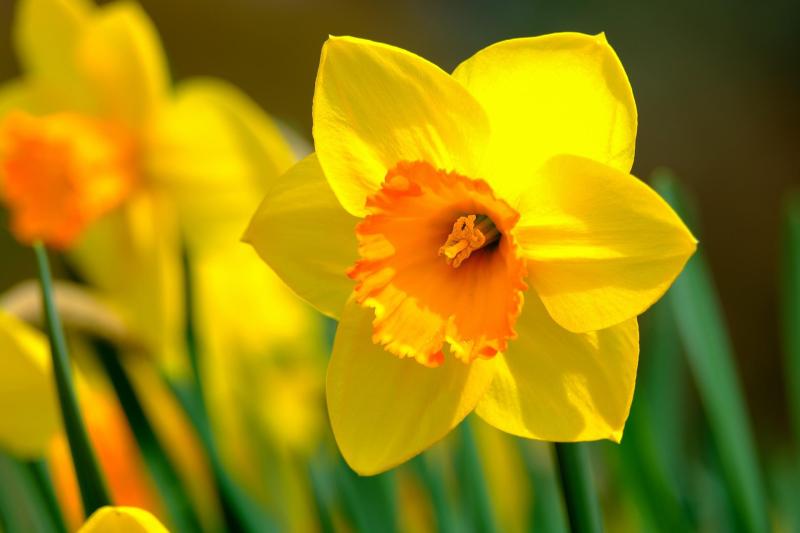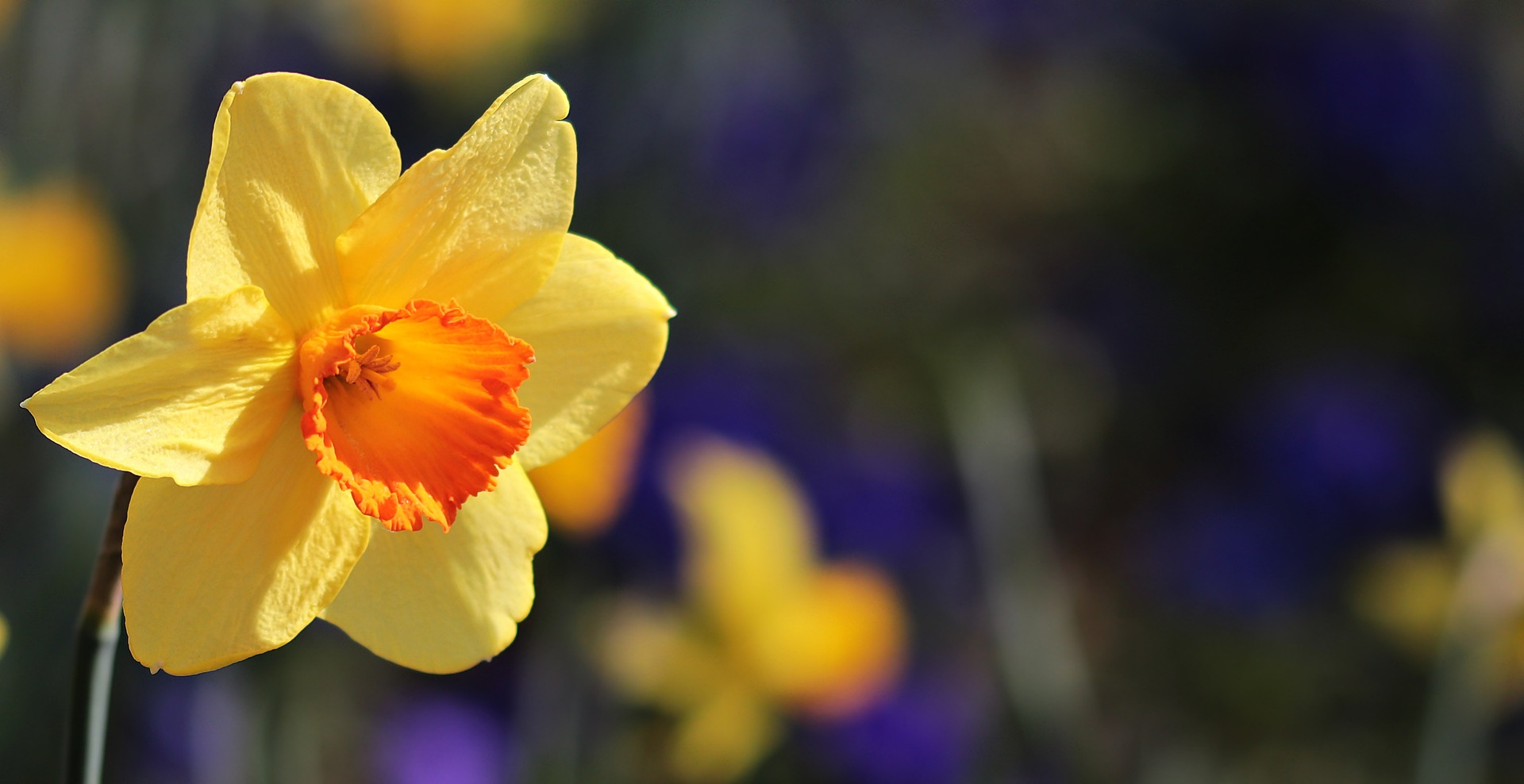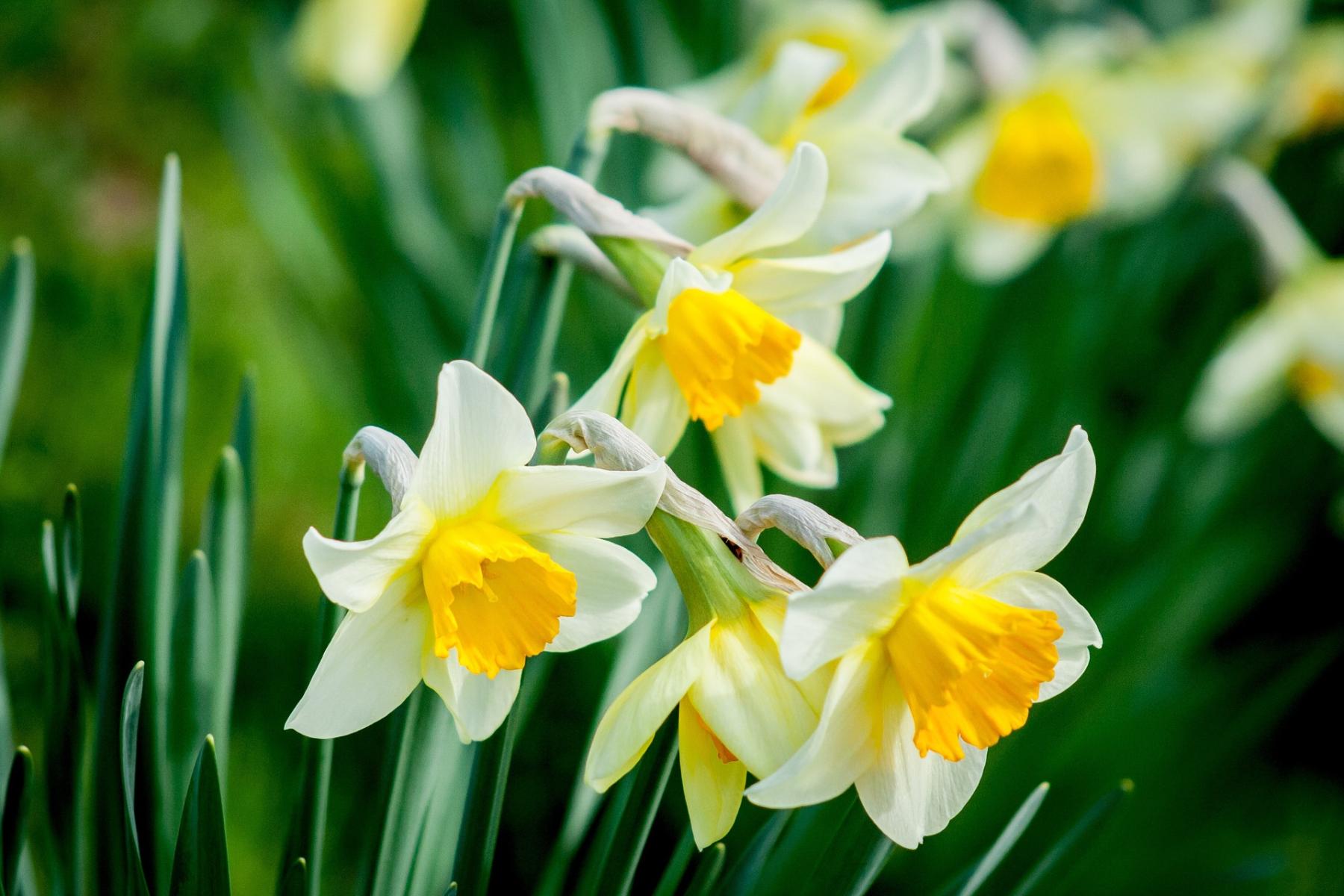
Planting flowering bulbs is a fall tradition for many gardeners, and there is still plenty of time to get your bulbs in the ground this fall. In eastern Nebraska, bulbs can be planted from late September through the end of October, ideally when soil temperatures are below 60 degrees. This allows the root system to develop before the ground freezes. Check current soil temperatures on Nebraska Extension’s Crop Watch website
Daffodils are among the most popular spring flowering bulbs with hundreds of cultivars to choose from, producing plants varying in flower color, flower form and height.
 Selecting Daffodil
Selecting Daffodil
There is often confusion regarding the right name – narcissus, daffodil, jonquil – which is correct? Narcissus is the Latin genus name for all daffodils, so narcissus is correct for all. Daffodil is the common name given these plants by English gardeners. Jonquil is the common name for one particular daffodil type, which has clusters of flowers on each stem and very narrow, dark green or reed-like leaves. Based on flower size, structure and number, the Royal Horticultural Society divides narcissus into thirteen divisions. If you’d like to explore these divisions, visit The American Daffodil Society.
Each year the American Daffodil Society honors cultivars displaying garden excellence with the Wister Award, based on long-lasting flowers, disease resistance, and good plant vigor and garden performance. If you’d like to research recent award winners, visit the website above and click on Daffodil Info> Daffodil Awards.
However, finding specific cultivars can be a challenge; so if you fall in love with one you’ll probably need to check with a mail-order bulb supplier to find it.
Landscape Design Tips
Keep in mind these design tips for using flowering bulbs in your landscape.
- Choose a variety of bulbs that bloom in early, mid and late spring to have to longest display of flowers possible.
- Plant bulbs in masses or circular groupings and not in straight lines. Try digging a larger hole than usual and putting three or more bulbs in each hole. Stagger the planting holes throughout the area, keeping them approximately 6 to 8 inches apart. This procedure will result in large splashes of color in the landscape.
- Double-deck your bulb beds by planting large bulbs like daffodils 5 to 6 inches deep, then add a few inches of soil and plant a layer of smaller bulbs like grape hyacinth or crocus above them at 2 to 3 inches.
 Purchasing and Storing Bulbs
Purchasing and Storing Bulbs
When purchasing bulbs, choose the largest available. Undersized bulbs may require one or two years of growth before they bloom.
If you buy bulbs ahead of planting time, store them in a cool, dry area. A temperature of 60-65°F degrees is cool enough to preserve the energy of the bulbs until they can be planted; long periods of temperatures higher than 65°F degrees can damage the flower within the bulb.
Choosing a Planting Site
Most bulbs need full sunlight, so choose a planting site that gets at least five or six hours of direct sunlight per day. Very early blooming plants like grape hyacinth or crocus can be planted under trees since they bloom before the tree puts on new leaves. However, bulbs do need sun even after they bloom, since this is when they create and store energy for next year's floral display. So if you want the bulbs to bloom in successive years, the area should receive at least 10 hours of direct sun per day.
Most Nebraska soils have good levels of phosphorus so no fertilizer is needed at planting time, except for a little bone meal in each planting hole. Compost spaded into the entire planting area before the bulbs are planted is also beneficial to add organic matter and increase water percolation.
After Planting Care
Your planting will need irrigation to ensure good root development before the soil freezes. Without irrigation, your bulbs will not root in well, which in turn could result in frost heaving of the bulbs or desiccation (drying out) to the point of bulb death. Water the planting well after installation, and again every two weeks until the soil freezes. Also apply a 3-inch layer of wood chip mulch after planting to conserve soil moisture.
Images from Pixabay.com